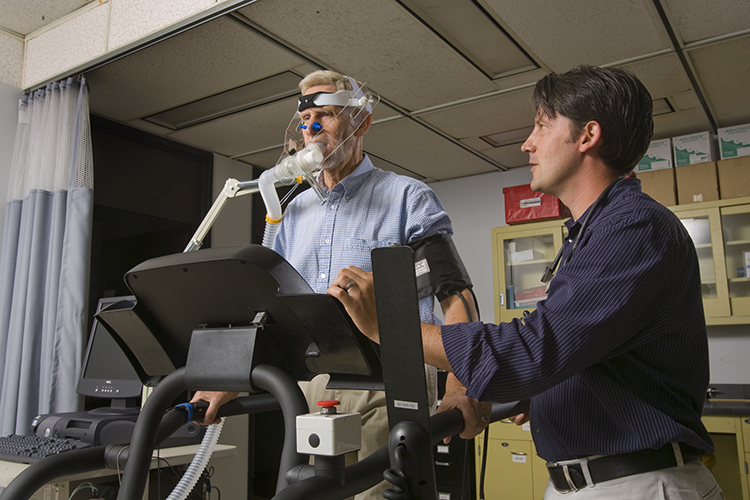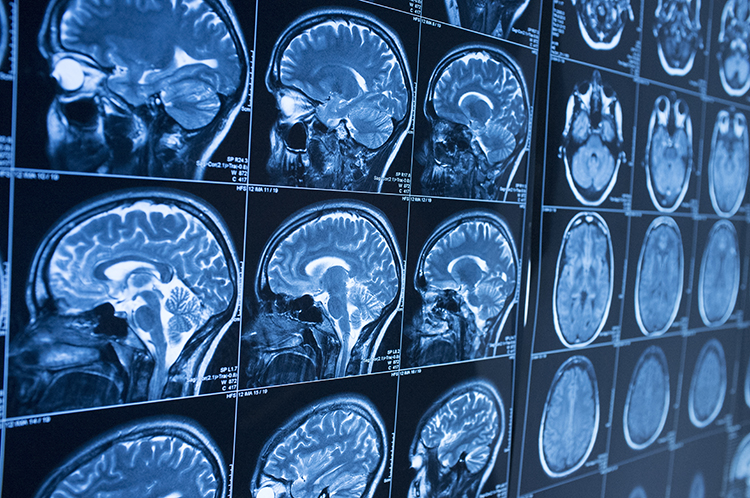Health-related research is one of the strengths of the University of Wisconsin-Milwaukee. Projects cover a wide range, from the unexpected benefits of exercise to an association between menopause and dementia. Here are UWM’s top active grants from the National Institutes of Health, according to dollar amounts.
African-Americans and breast cancer, $4.6 million

The incidence of breast cancer in African-Americans under age 50 is higher than for whites, but the reverse is true after age 50. And black women are more likely to die of the disease. What’s going on? Epidemiologist Ellen Velie is leading a study to find out why the disease has racial patterns by collecting data on environmental and lifestyle risks. Velie, who joined the Zilber School of Public Health in 2014, brought with her a slice of funding for one of the largest U.S. studies of breast cancer in African-Americans. It involves more than 3,000 women at sites in Detroit and Los Angeles.
Exercise in people with limited movement, $2.8 million

Scott Strath and Ann Swartz, professors in the College of Health Sciences, are embarking on a first-of-its-kind data-collection project aimed at revealing the extent to which those with physical limitations are active. The data will inform how best to intervene so that people who need exercise the most can get more of it. The research team is outfitting nearly 400 Milwaukee-area adults with wearable movement-trackers. The subjects will wear heart-rate monitors, cameras and accelerometers, which are similar to Fitbits, for extended periods as they go about their daily routines.
Effects of chronic marijuana use in adolescence, $2.7 million

Regular marijuana use before age 16 has been shown to disrupt the development of brain regions involved in persistence, decision-making and long-range planning. But most of the research on the effects of marijuana on the brain has been done with adults. Neuropsychologist Krista Lisdahl is conducting a sweeping study that tests whether regular exercise diminishes the cognitive damage that pot smoking does to teenagers’ still-developing brains. And she’s taking the pictures to prove it. Using three kinds of neural imaging and multiple measures of fitness among young pot users, the project aims to better understand the consequences of a pot habit before the brain is fully “wired.”
Investigating an autism/air pollution link, $2.3 million

Could air pollution from traffic emissions play a role in whether a child develops autism or attention deficit hyperactivity disorder? A team of investigators led by Amy Kalkbrenner in the Zilber School is beginning a study to further explore this connection. The researchers will examine genes important in detoxifying chemical exposures and helping protect children’s nervous systems as they grow. Researchers also will investigate what factors are involved in children who are diagnosed with both autism and ADHD. Autism occurs in 1 to 2 percent of children, while the prevalence of ADHD is estimated at 5 percent.
A better asthma drug – minus the inhaler, $2 million

Three UWM researchers are developing a drug that will replace the use of steroid inhalers for treating asthma with a pill, potentially reducing the side effects of long-term use of steroid medication. The team includes Douglas Stafford, director of the Milwaukee Institute for Drug Discovery at UWM, and Distinguished Professor James Cook and associate professor Alexander Arnold in chemistry. They are redesigning a drug compound that Cook had originally created to calm the nervous system without the threat of addiction. The new compound aims to relax the lungs’ smooth muscle and tame the inflammation that occurs in an asthma attack.
Probing how human memory works – or doesn’t, $1.8 million each

Two neuroscientists in the Department of Psychology are studying different aspects of brain circuitry involved in memory. Distinguished Professor Fred Helmstetter is investigating the fundamental mechanisms of neural systems that govern not only memory but also overlapping aspects of perception, learning and emotion. Professor Karyn Frick’s work delves into the role of the hormone estrogen in the complex cellular communication system underlying memory. A decline in estrogen during menopause increases a woman’s risk of dementia and Alzheimer’s. Frick’s work has shown that estrogen has a beneficial effect on a brain region called the hippocampus, which deteriorates with age or Alzheimer’s disease.







